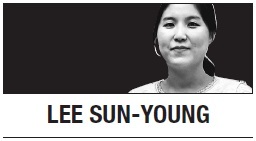Last summer was memorable. Memorable in a bad way.
I love summer, but last year’s was unbearable, with day highs hovering over 35 degrees Celsius for weeks. My long-awaited summer holiday was ruined because the wet, sauna-like conditions outside made me not want to leave the comfort of an air-conditioned room. I was then served with electricity bill “bombs” for resorting to air conditioning day and night. I thought it was an exceptional summer.
And here we are, in the middle of another scorcher.
Days with temperatures touching 35 degrees Celsius now feel like the “new normal.” Record temperatures and heat wave warnings now seem to be just part of summer in South Korea.
Heading into mid-August, seven deaths have been confirmed so far from this year’s summer heat, with over 1,200 people having taken to hospital for heat-related illnesses. Last year’s full-season tally was 17 deaths and 2,125 patients.
The extreme weather is also threatening the lives of animals.
So far, 2.1 million animals perished at local farms – mostly chickens, ducks and pigs.
Fish farms are also reporting mounting damage. According to the state-run National Institute of Fisheries Science, the East Sea is up to 7 degrees Celsius warmer than usual, with surface temperatures recording as high as 29 degrees Celsius. The water is warmer by 2-3 degrees, even compared to the corresponding period in 2016.
The devastating hot spell is a global phenomenon.
South Europe is battling a devilish heat wave, dubbed the Lucifer. Many other parts of the world, including the US’ Pacific Northwest, are also grappling with an unusual, punishing heat this summer.
What’s more worrying is that a long and dangerously hot summer is not an exceptional event. Experts say it is a trend that will intensify in coming decades.
According to research by the University of Hawaii, Seoul is projected to have up to 67 days of “killer heat waves,” with temperatures exceeding the threshold in which people have previously died, in 2100.
The study, published in Nature Climate Change, estimated that there would be no days affected by lethal temperatures in Seoul in 2020, but the figure would rise to seven days in 2050, 35 days in 2075 before reaching the 2100 estimate. Across the globe, 74 percent of the population will be endangered by the deadly heat waves by 2100, it projected.
A separate study said of all extreme weather events, heat waves would be the most lethal, causing 99 percent of all future weather-related deaths in Europe.
Deaths from heat waves would rise from 2,700 a year between 1981 and 2010 to 151,500 deaths a year in 2071 to 2100, according to the research published in the Lancet Planetary Health.
Both studies are based on one common assumption that we do not drastically cut greenhouse gasses and the governments make no policy intervention to guard against deaths from extreme weather. In other words, there is a clear way -- acting aggressively and acting now -- to prevent this grim projection from becoming reality, although the solution is far more complex than it sounds.
Summer will pass and cooler air will arrive in the coming weeks. And perhaps, people’s attention on the warming weather may subside.
But South Korea has reasons to act with a sense of urgency on climate change.
The country’s greenhouse gas emissions increased 39 percent in 2013 compared to 2000, marking it the second-fastest pace of growth among the members of the Organization for Economic Cooperation and Development. Only Turkey registered a faster increase of emissions during the corresponding period. S. Korea was the fifth-largest emitter in the group, climbing four notches from ninth place in 2000.
The new Moon Jae-in administration is displaying a high level of political commitment to fighting climate change, vowing to achieve the country’s goal of slashing emissions by 37 percent, or 315 million metric tons, by 2030 based on business-as-usual levels.
The administration’s strong drive for an energy U-turn, away from nuclear and coal toward natural gas and renewables, has stirred a heated debate, as it went as far as to reconsider two new nuclear reactors whose construction is about 30 percent complete.
A path toward a greener future was never expected to be an easy one. Vested interests will surely collide and whichever direction it takes, there will inevitably be winners and losers in the short term.
But when gauging the benefits of a climate action, let’s not forget our fun-filled memories of summer in childhood. Do we want our future generations to inherit deadly summers in which kids are advised to stay indoors and farmers and outdoor workers face a risk to their life?
By Lee Sun-young
Lee Sun-young is the national desk editor. She can be reached at milaya@heraldcorp.com. – Ed.






